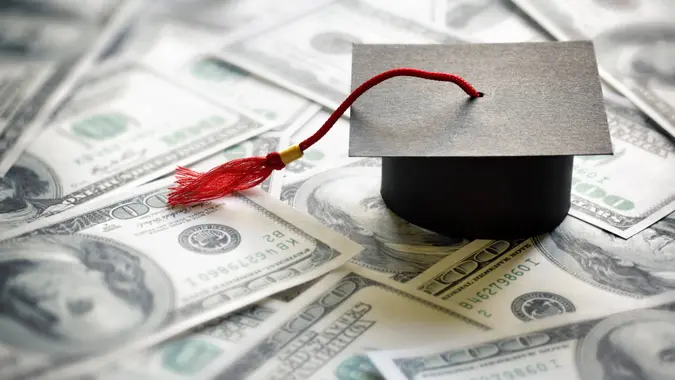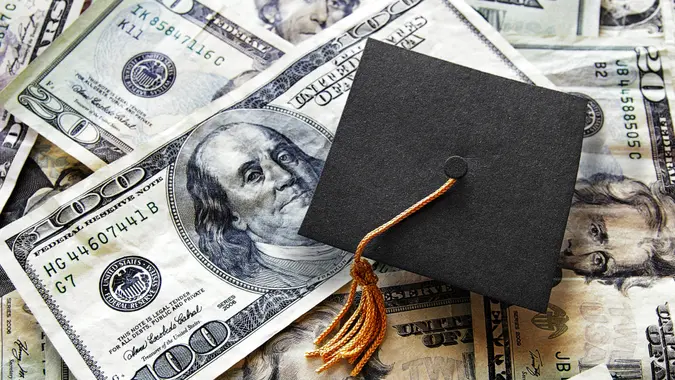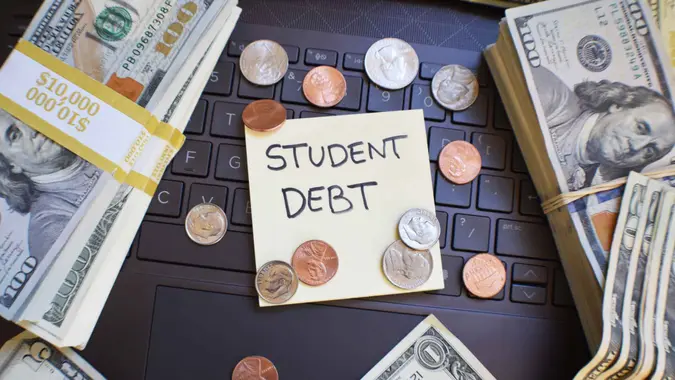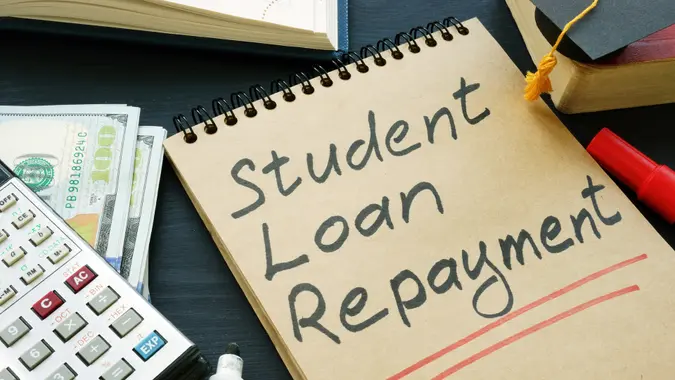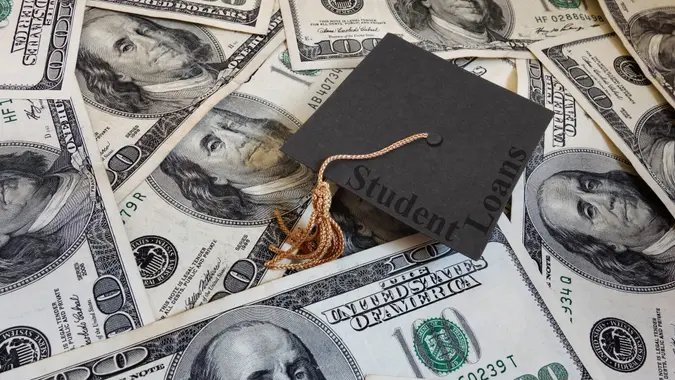Late To Paying Your Student Loans? 5 Ways To Lower Your Payments

Commitment to Our Readers
GOBankingRates' editorial team is committed to bringing you unbiased reviews and information. We use data-driven methodologies to evaluate financial products and services - our reviews and ratings are not influenced by advertisers. You can read more about our editorial guidelines and our products and services review methodology.

20 Years
Helping You Live Richer

Reviewed
by Experts

Trusted by
Millions of Readers
If you’ve found yourself late on paying your student loans, you’re not alone.
“With both Federal and Private Student Loans due monthly (and about 10% of Federal student loan borrowers have both) delinquencies and defaults on student loans continue to rise,” said Jack Wallace, director of government and lender relations at Yrefy, Phoenix, Arizona.
It’s time to take action. Here are ways to avoid further lateness and lower your student loan payments.
Consolidate Your Loans
Wallace suggested consolidating your federal student loans into one loan, so that you have one monthly payment. “Go to the U.S. Department of Education website at studentaid.gov to consolidate your Federal Student Loans,” he said.
It’s important to be aware of the following information from the office of Federal Student Aid (FSA) if you’re considering consolidating:
- All of your federal loans do not have to be consolidated.
- Although your monthly payment amount may decrease, you’ll likely have to pay out your loan over a longer term.
- Any unpaid interest on your loans will result in a principal balance increase.
- A consolidation loan will generally be assigned a new interest rate.
- Borrowers can lose credits for any payments made toward income-driven repayment forgiveness.
.
Compare Repayment Plans
Wallace said that once you’ve consolidated your loans, you can use the Loan Simulator to compare repayment plans. “Once you have selected a repayment plan that meets your current financial needs, sign up for the Income-Driven Repayment Plan that works for you,” he added.
However, it’s important to keep in mind that the Loan Simulator cannot predict future payments with total accuracy. It makes various assumptions about factors including your income, tax filing status, loan interest rate and loan repayment term to calculate monthly payment amounts.
Consider Refinancing Private Student Loans
If you have private student loans and “very good” or “excellent” credit, Wallace recommended finding out if there are financing options available to lower your monthly payment.
Drawbacks of refinancing private student loans include a longer repayment term and losing current lender benefits, such as generous deferment or forbearance options, that you might not find with another lender.
Consider Refinancing Federal Plus or Grad Plus Loans
“If you have Federal Plus or Grad Plus Federal Student Loans, given the substantially lower interest rates on private student loans, you may be better off refinancing your federal student loans out of the federal student loan program into a private student loan where you can save 1% to 5% on your interest rate depending upon your credit,” Wallace explained.
Also consider the cons of taking this route, such as losing hardship options and facing stricter repayment terms.
Take Advantage of Employer Benefits
Wallace also recommended checking with your employer to see if it offers the tax-free IRS benefit under Section 127 that pays up to $5,250 per year for tuition or student loan reimbursement and sign up for it. He also suggested if your employer doesn’t currently offer employer-provided educational assistance under Section 127, to encourage it to sign up and offer it as a corporate benefit.
More From GOBankingRates
 Written by
Written by  Edited by
Edited by 



